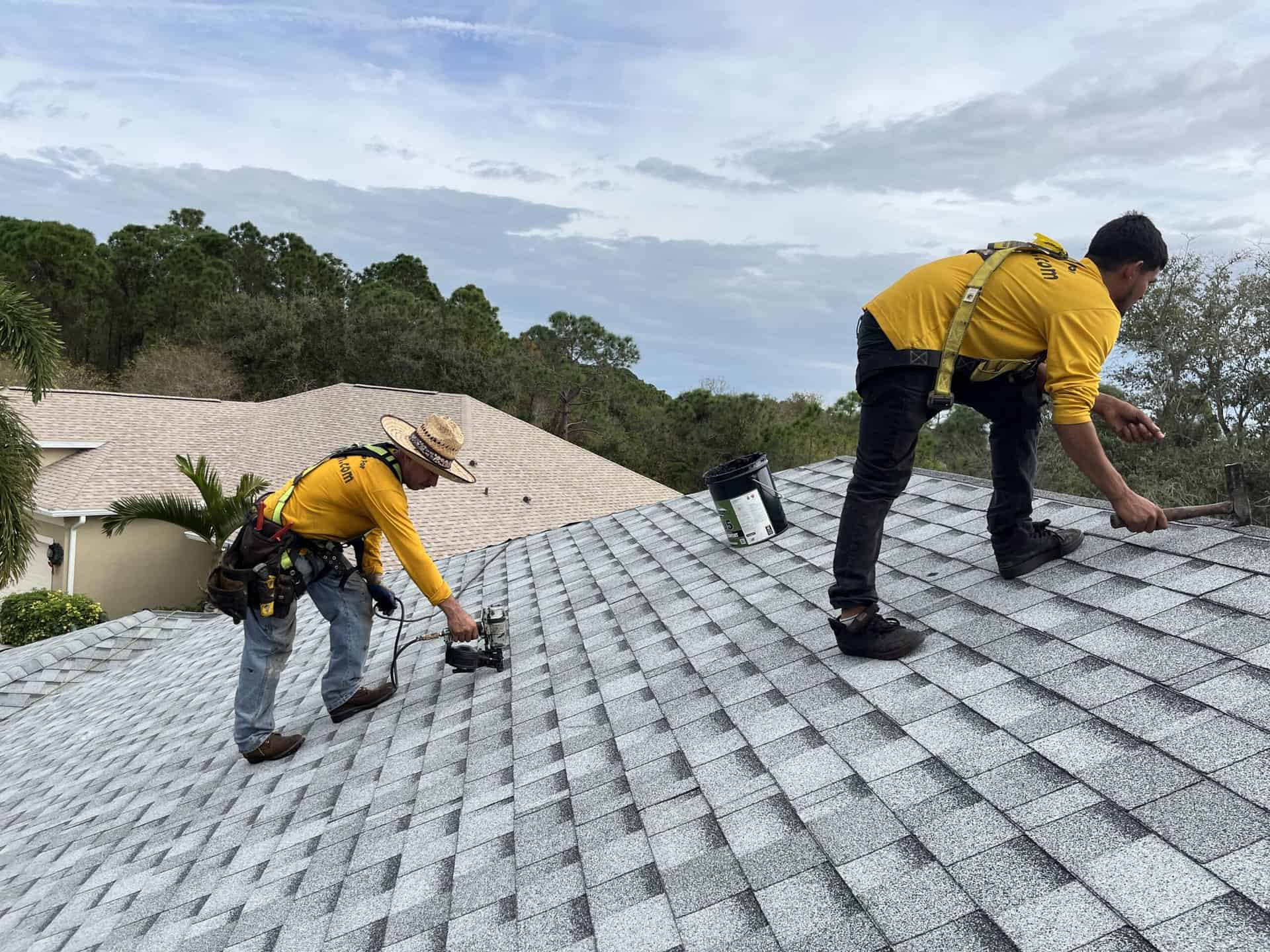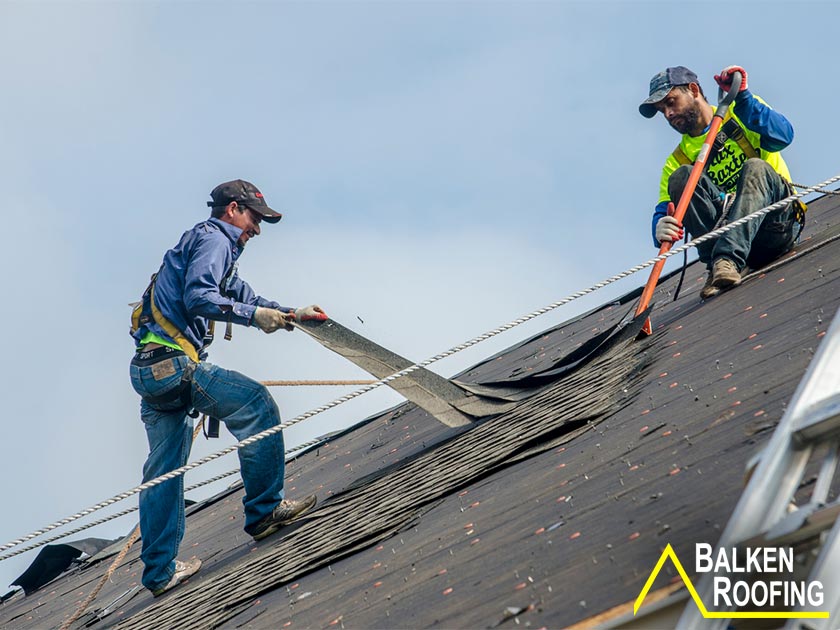Roofing Contractor: Licensed Professionals for Your Roofing Jobs
Wiki Article
Reviewing the most effective Roof Covering Materials for Substitute: A Thorough Analysis of Longevity, Expense, and Aesthetic Allure
Picking the right roof covering product for substitute entails a cautious evaluation of several vital elements, including longevity, expense, and aesthetic allure. The visual influence of materials like clay tiles can not be forgotten, regardless of their premium price factor.Overview of Roof Covering Products
As property owners significantly focus on sturdiness and power performance, understanding the various roof materials available for substitute becomes necessary. The selection of roof covering materials straight influences not only the aesthetic appeal of a home but likewise its lasting performance and maintenance costs.Amongst the most common roofing products are asphalt roof shingles, steel roof, and ceramic tile. Steel roof covering, which consists of materials such as steel and light weight aluminum, offers extraordinary sturdiness and energy performance, frequently mirroring warm and decreasing cooling expenses.
In addition, newer products such as synthetic roof shingles and environment-friendly roof are getting traction. Artificial alternatives resemble traditional products while providing enhanced resilience and reduced maintenance requirements. Environment-friendly roofing systems, which integrate vegetation, contribute to power performance and biodiversity.
Longevity Assessment
When reviewing roof products for replacement, longevity is an important element that home owners need to think about. The lifespan and strength of roof materials directly influence long-term maintenance and replacement costs. Various products exhibit varying degrees of toughness, making it necessary to recognize their performance under ecological stress factors.Asphalt shingles, while popular for their cost-effectiveness, typically last 15 to thirty years and might call for even more frequent substitute because of degeneration from UV exposure and extreme weather condition. On the other hand, metal roof covering supplies amazing sturdiness, with a life expectancy of 40 to 70 years and resistance to wind, fire, and pests. Furthermore, clay and concrete tiles can withstand severe conditions, commonly outliving half a century, although their weight requires a robust architectural support group.

Cost Comparison
Thinking about the financial implications of roof materials is essential for homeowners intending a replacement. The price of roof materials can differ considerably based on variables such as material type, installation complexity, and regional prices differences.Asphalt shingles are among one of the most affordable options, normally ranging from $90 to $100 per square (100 square feet), making them a popular option for budget-conscious property owners. In comparison, metal roofing can cost between $250 and $700 per square, depending on the kind of metal and coating picked. While steel roofing systems tend to have a greater upfront price, their long life and energy efficiency might cause expense financial savings gradually.
Clay and concrete floor tiles are additionally on the greater end of the spectrum, balancing between $300 and $600 per square. These products use durability and visual charm however call for a considerable first financial investment.
Finally, slate roof covering, known for its outstanding longevity and ageless appearance, can vary from $600 to $1,500 per square, making it one of the most costly option. Property owners need to evaluate the preliminary expenses versus the expected life-span and maintenance needs of each product to make an informed choice.
Visual Considerations
Aesthetic factors to consider play a vital role in selecting roof covering materials, as the roof covering substantially impacts a home's overall appearance and visual charm. Home owners typically seek materials that enhance their building design and enhance the aesthetic allure of their property. The color, texture, and account of roof covering materials can substantially influence the overall aesthetic.Materials such as asphalt tiles use a range of colors and styles, making them a preferred choice for household projects. On the other hand, metal roof covering offers a smooth, contemporary appearance and is readily available in many finishes that can fit modern layouts. Traditional alternatives like clay tiles or slate can evoke a classic elegance, attracting those that prefer timeless appearances.
Additionally, the integration of roof products with surrounding aspects, such as siding and landscape design, is vital. A natural color combination and harmonious structures can raise a home's exterior and add to its worth. Property owners must likewise think about how the chosen roof covering product communicates with natural light, as this can impact the roof covering's look throughout the roofing company day. Inevitably, choosing cosmetically pleasing roof products calls for careful consideration of personal taste, building design, and the general vision for the home.
Final Referrals
Picking the ideal roofing material can significantly boost a home's durability and visual allure. new roof. Based upon our analysis of resilience, price, and visual factors, we suggest 3 main options for house owners taking into consideration a roof covering substituteFirst of all, asphalt tiles remain the most prominent option because of their price and flexibility. They supply a good equilibrium of cost-effectiveness and defense, making them ideal for most domestic applications. However, house owners ought to consider their durability, as they normally last 15 to thirty years.

Finally, for those seeking an upscale aesthetic, slate or floor tile roofing uses unrivaled sophistication and sturdiness. These materials come with a high price tag, their life expectancy can surpass 100 years, making them a deserving investment for high-end homes.
Eventually, the best choice will certainly depend on private budget, visual preferences, and local climate considerations. Property owners need to seek advice from with a roof professional to analyze their certain needs.
Final Thought
Finally, choosing the proper roofing material necessitates a careful evaluation of resilience, cost, and visual allure. Asphalt shingles provide an affordable option with modest longevity, while steel roofing masters resilience and energy performance. Clay and concrete tiles, although costlier, substantially improve aesthetic appeal and withstand extreme climate condition. Ultimately, the decision ought to align with private budget plans, style choices, and local climate variables, stressing the significance of professional examination for educated options.Report this wiki page